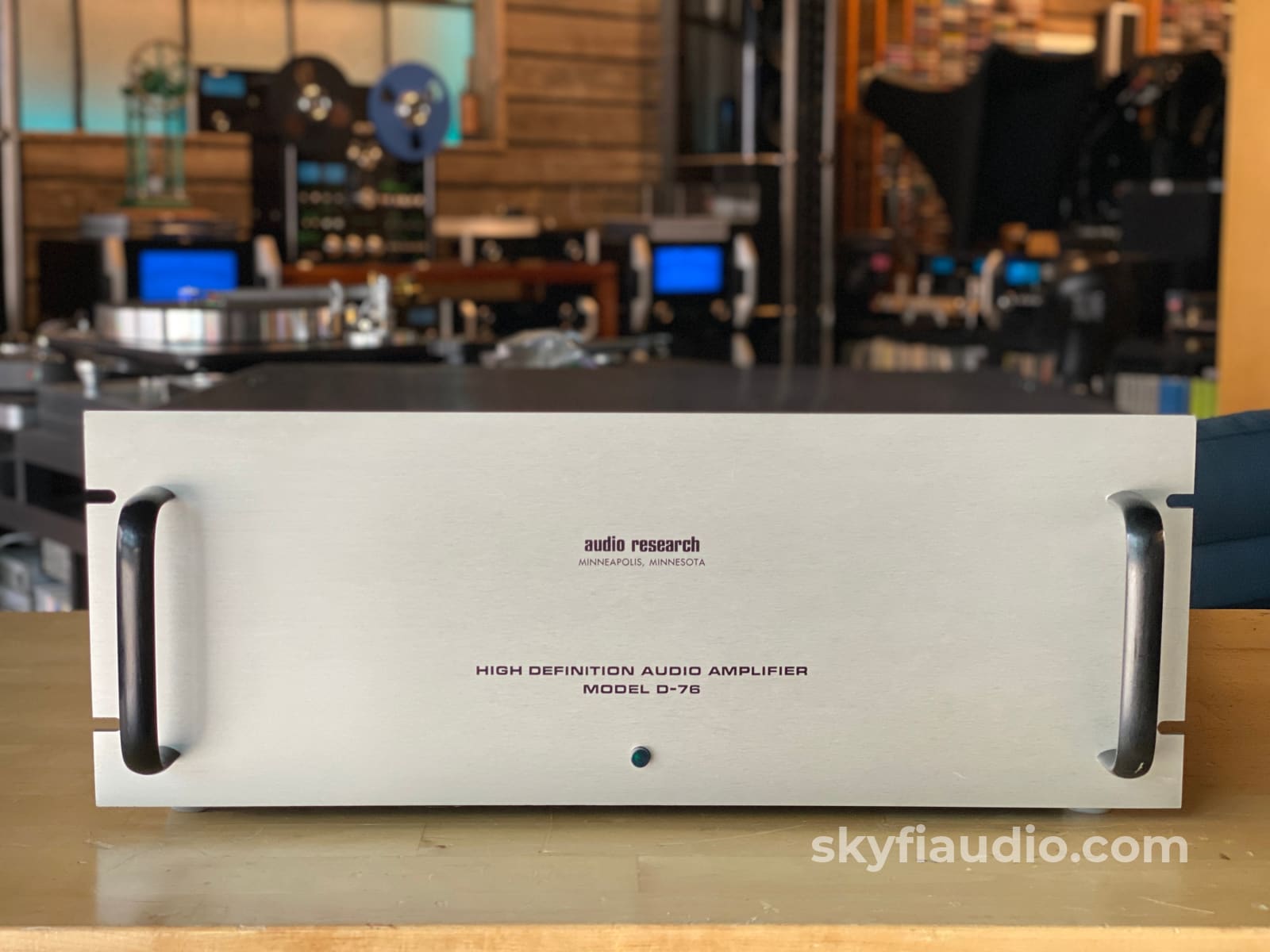
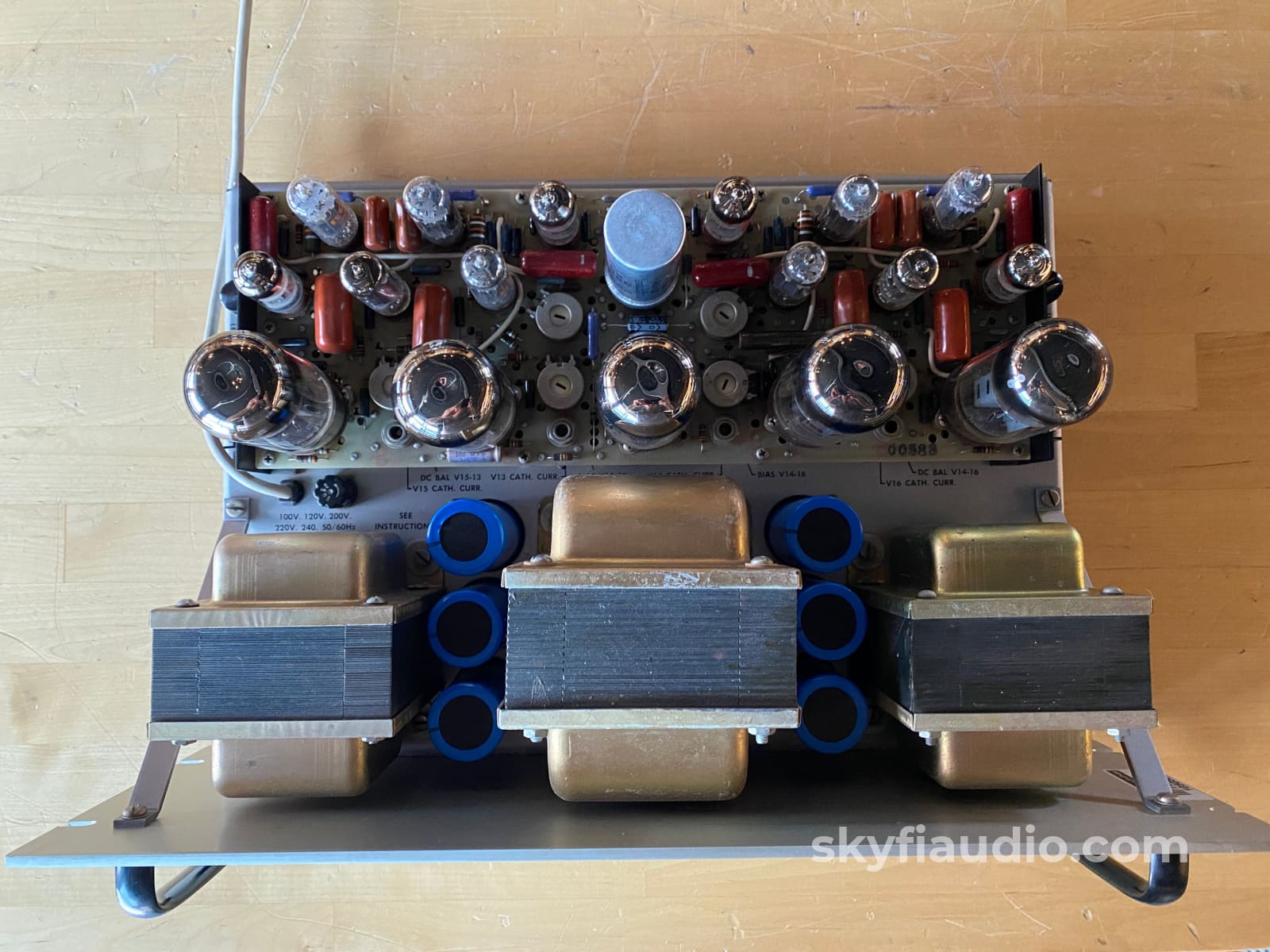

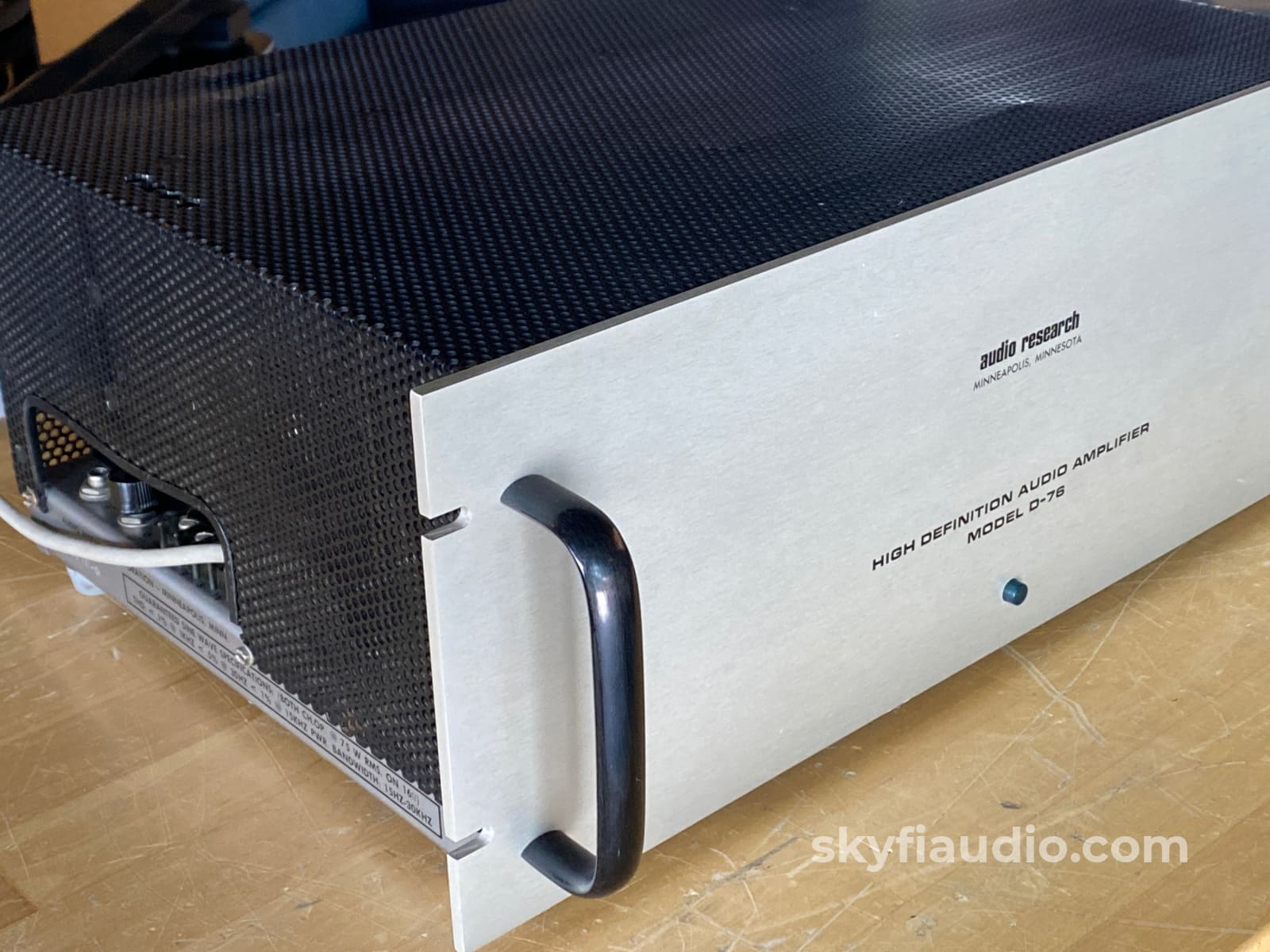
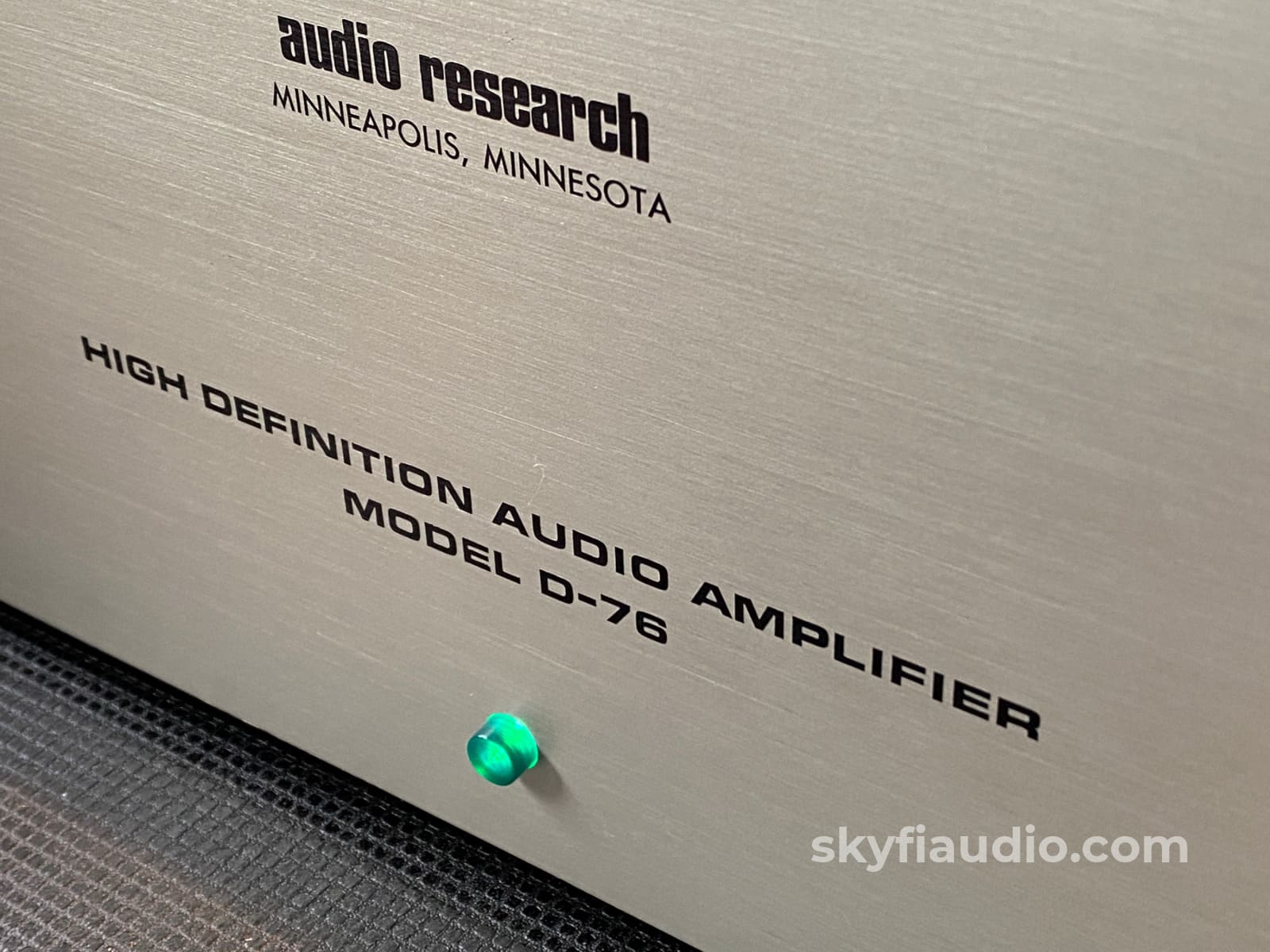
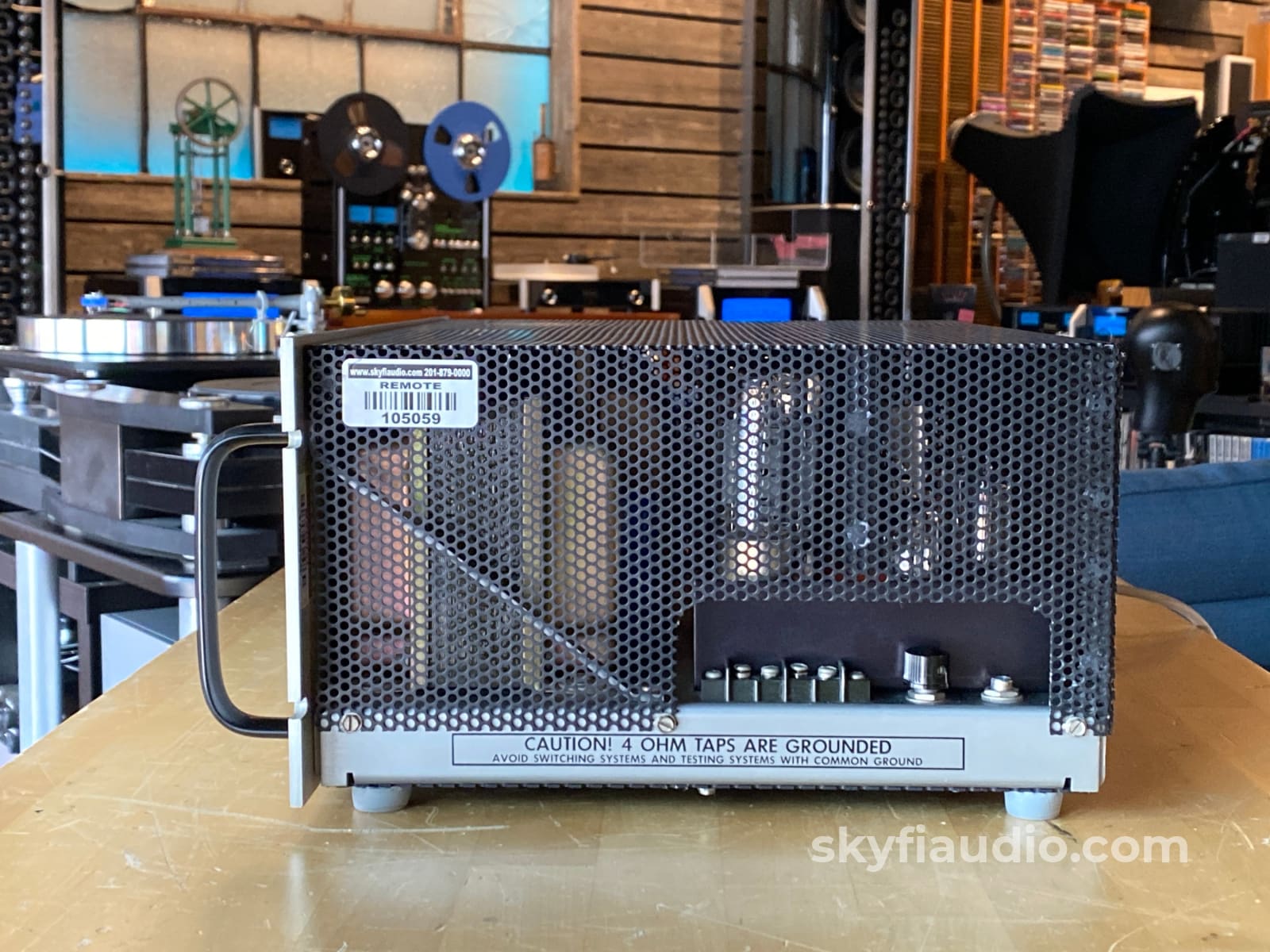
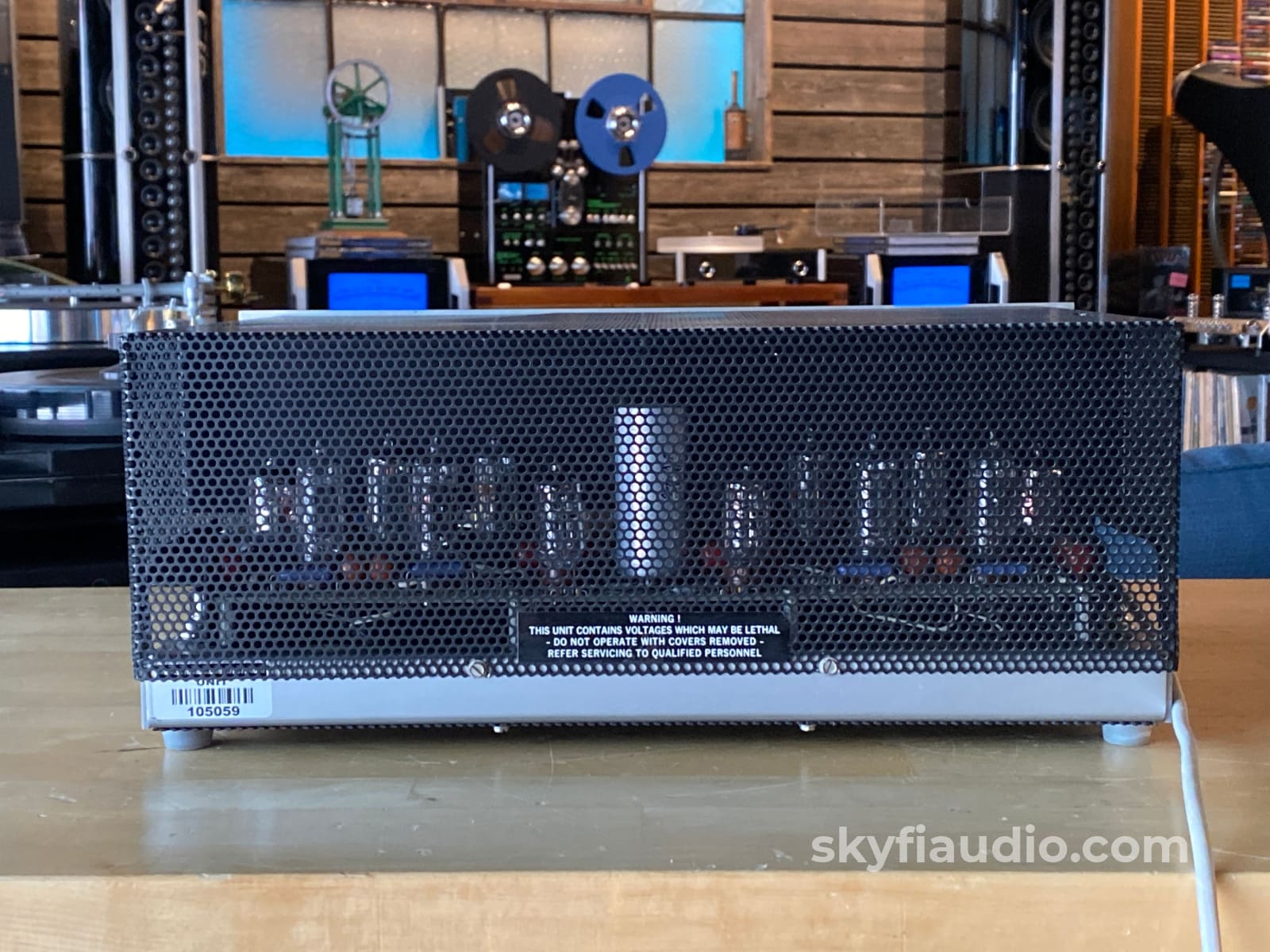
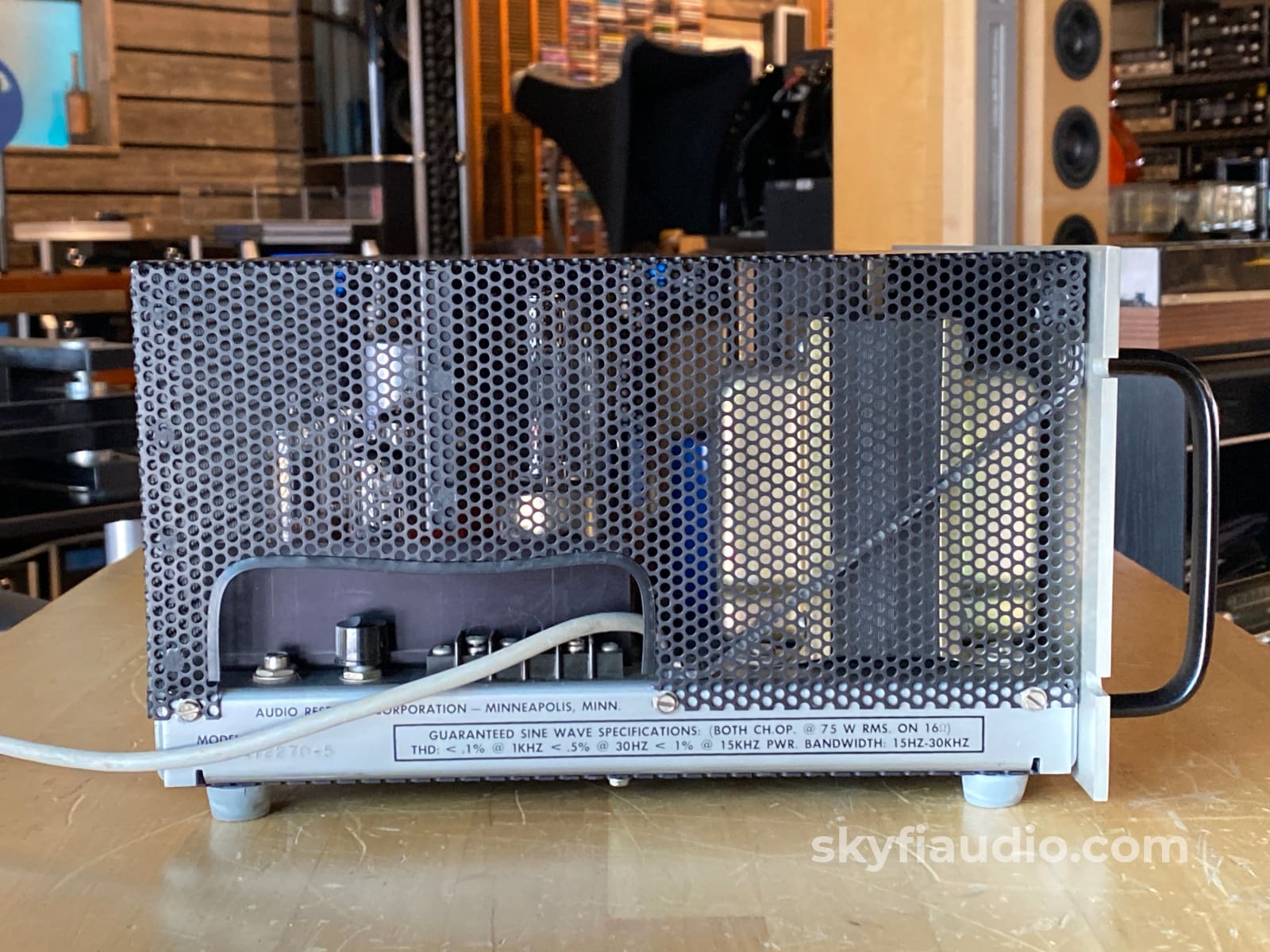
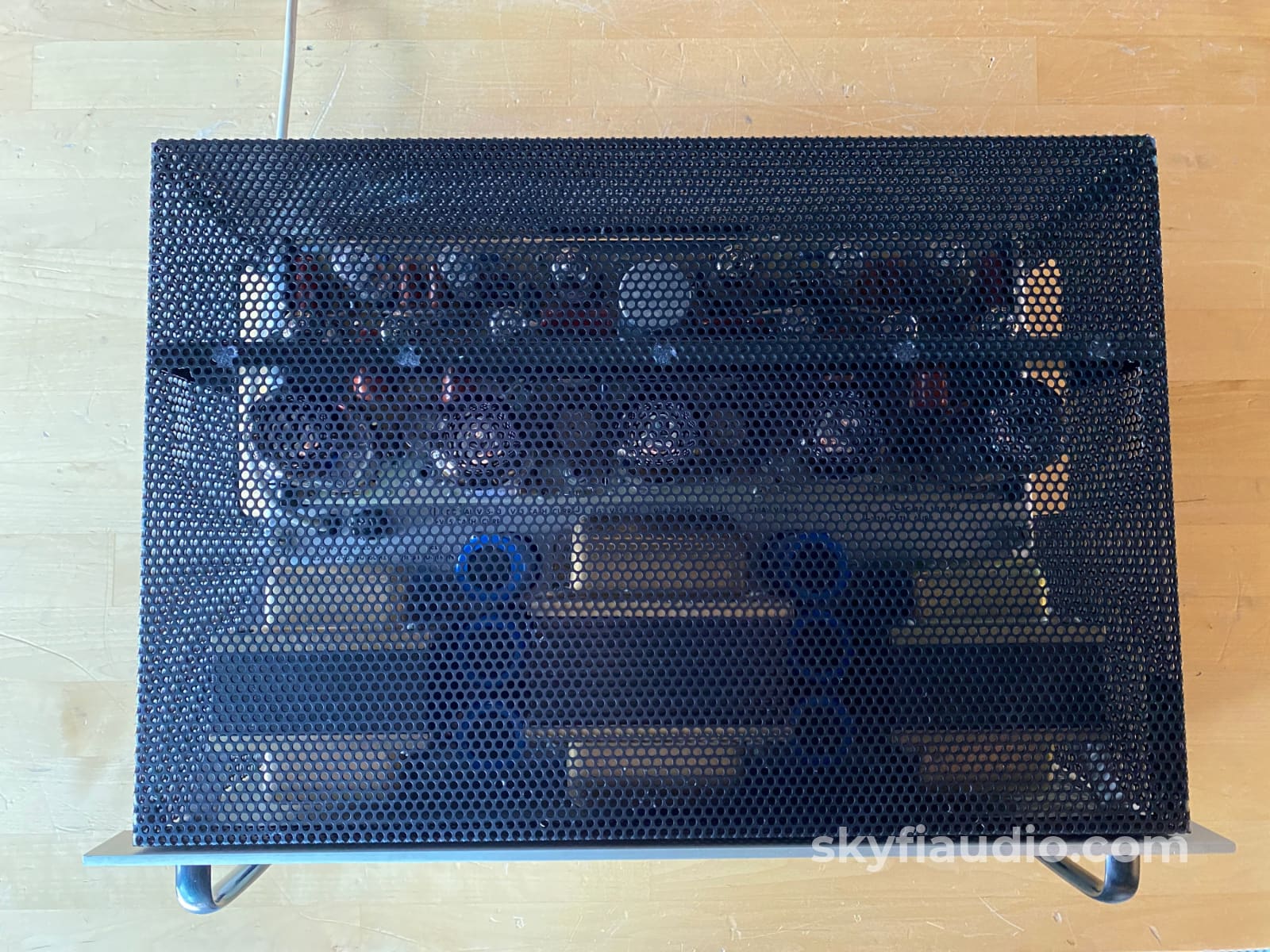
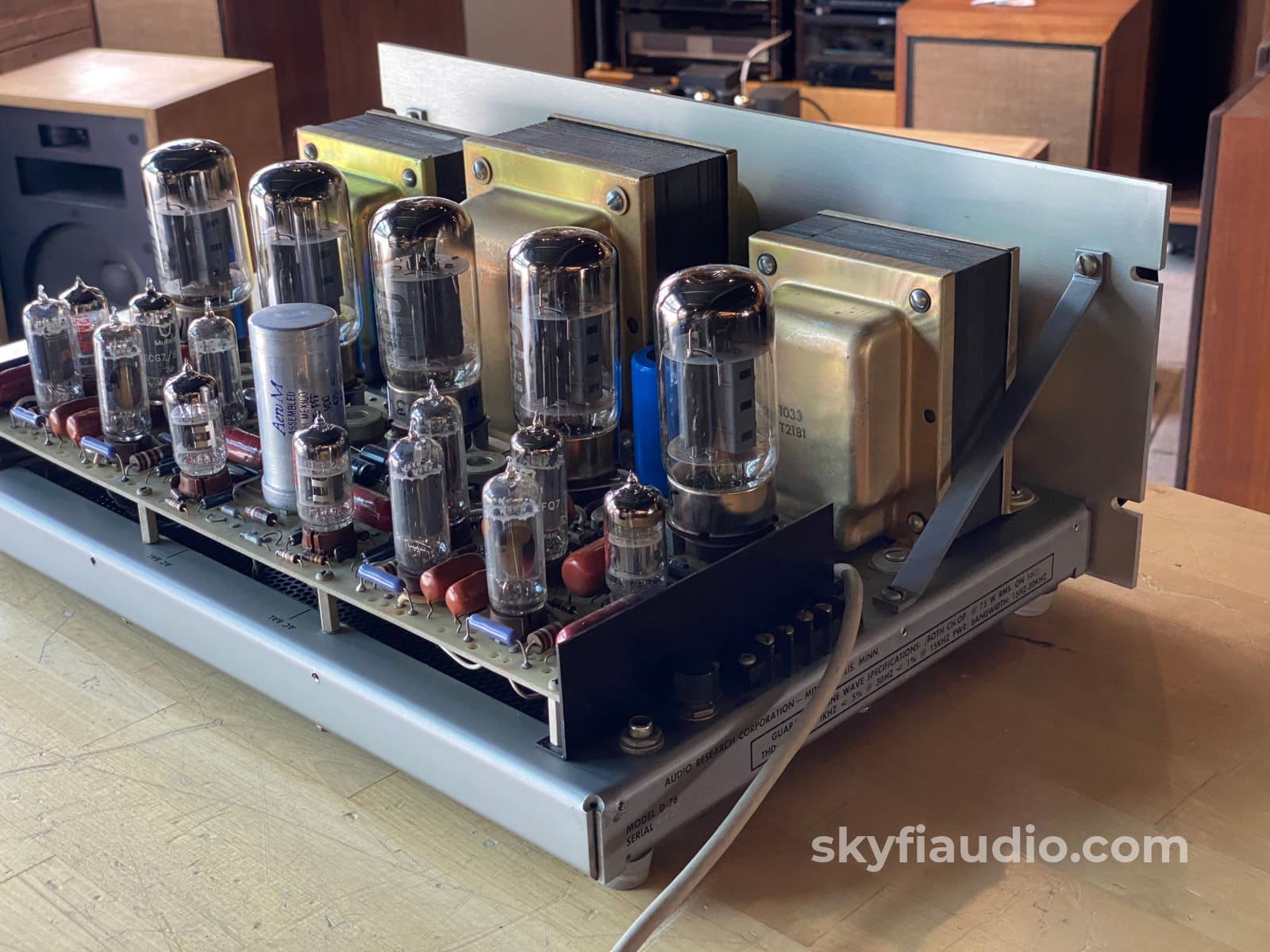
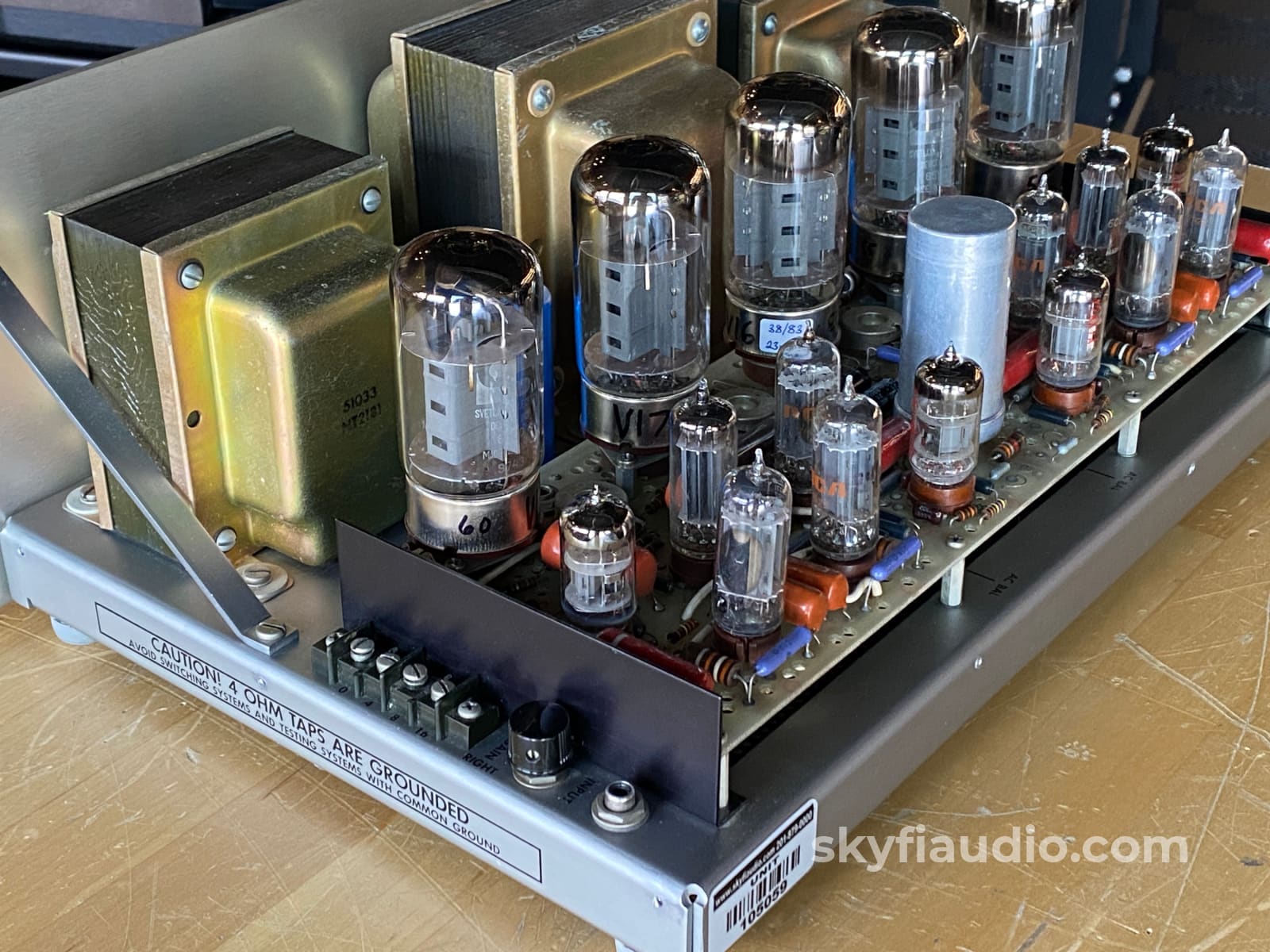
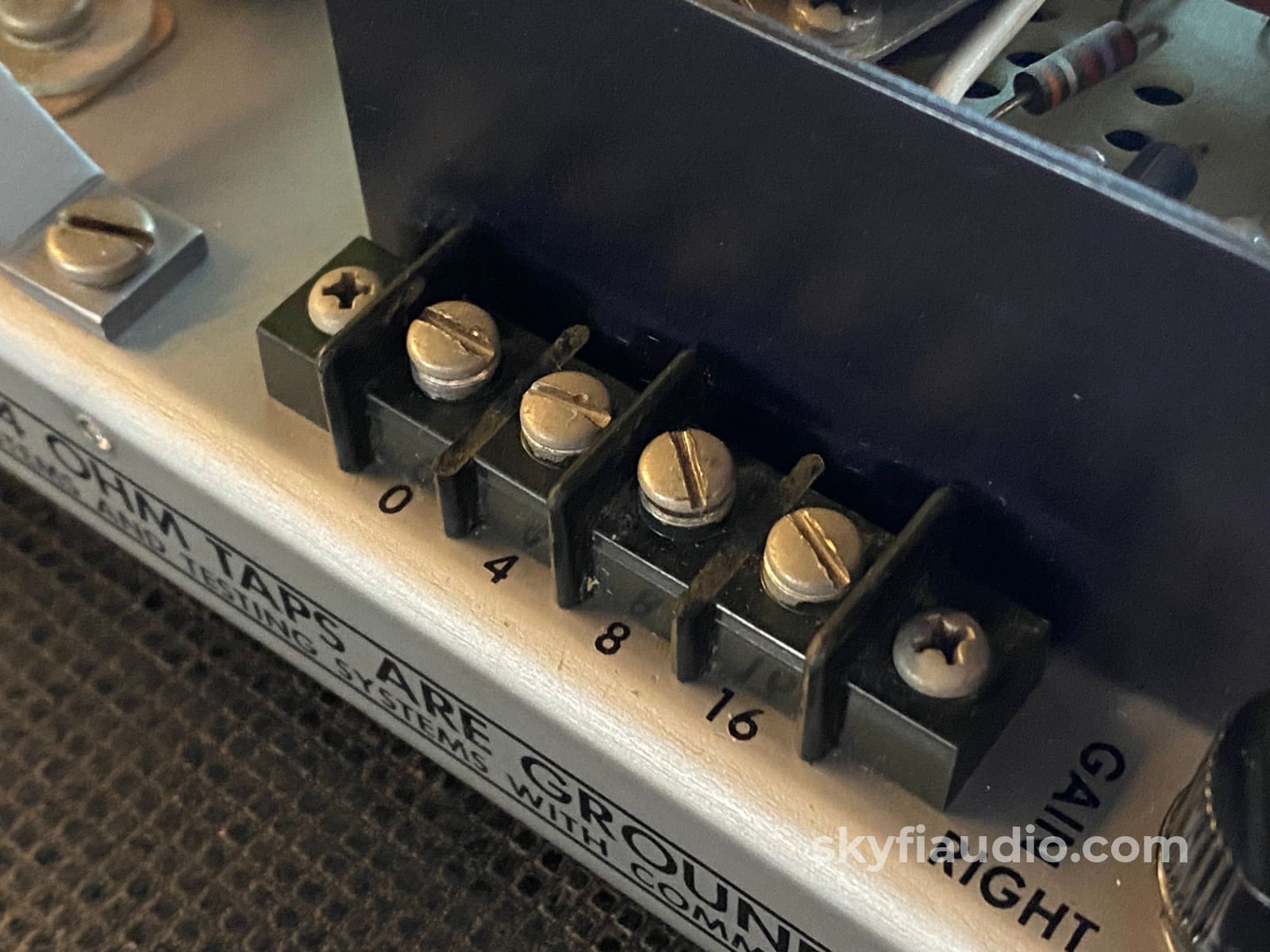
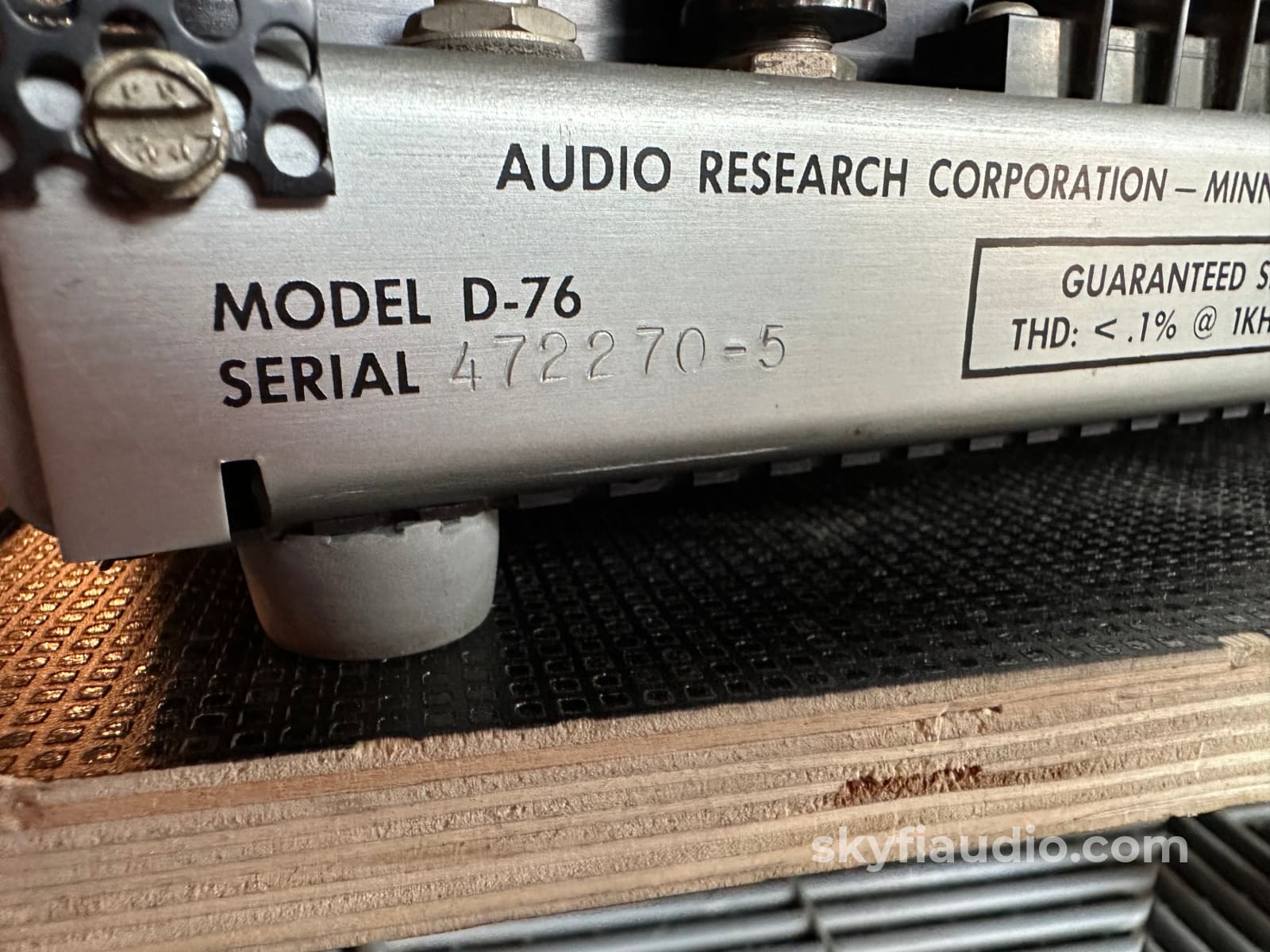
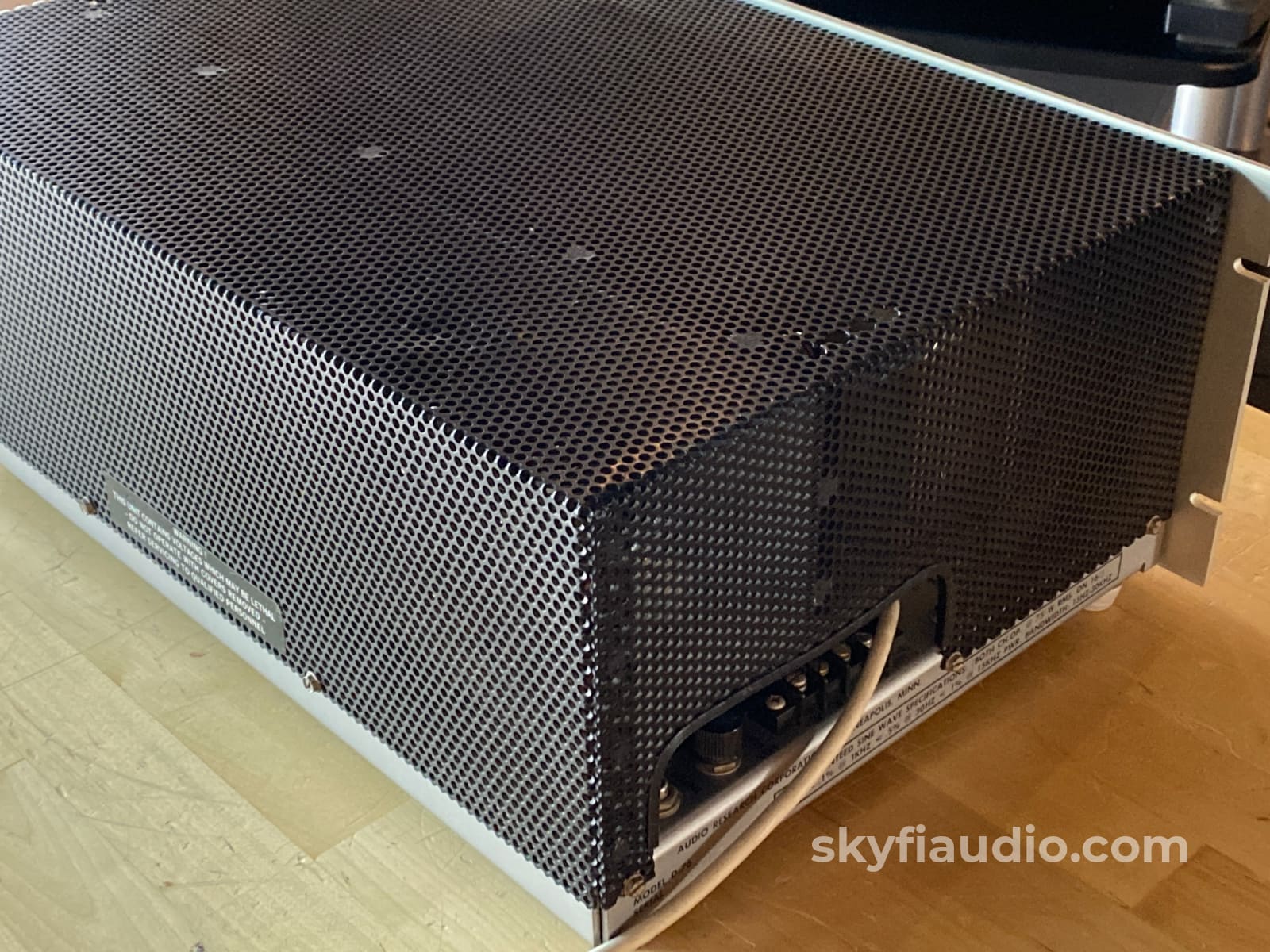
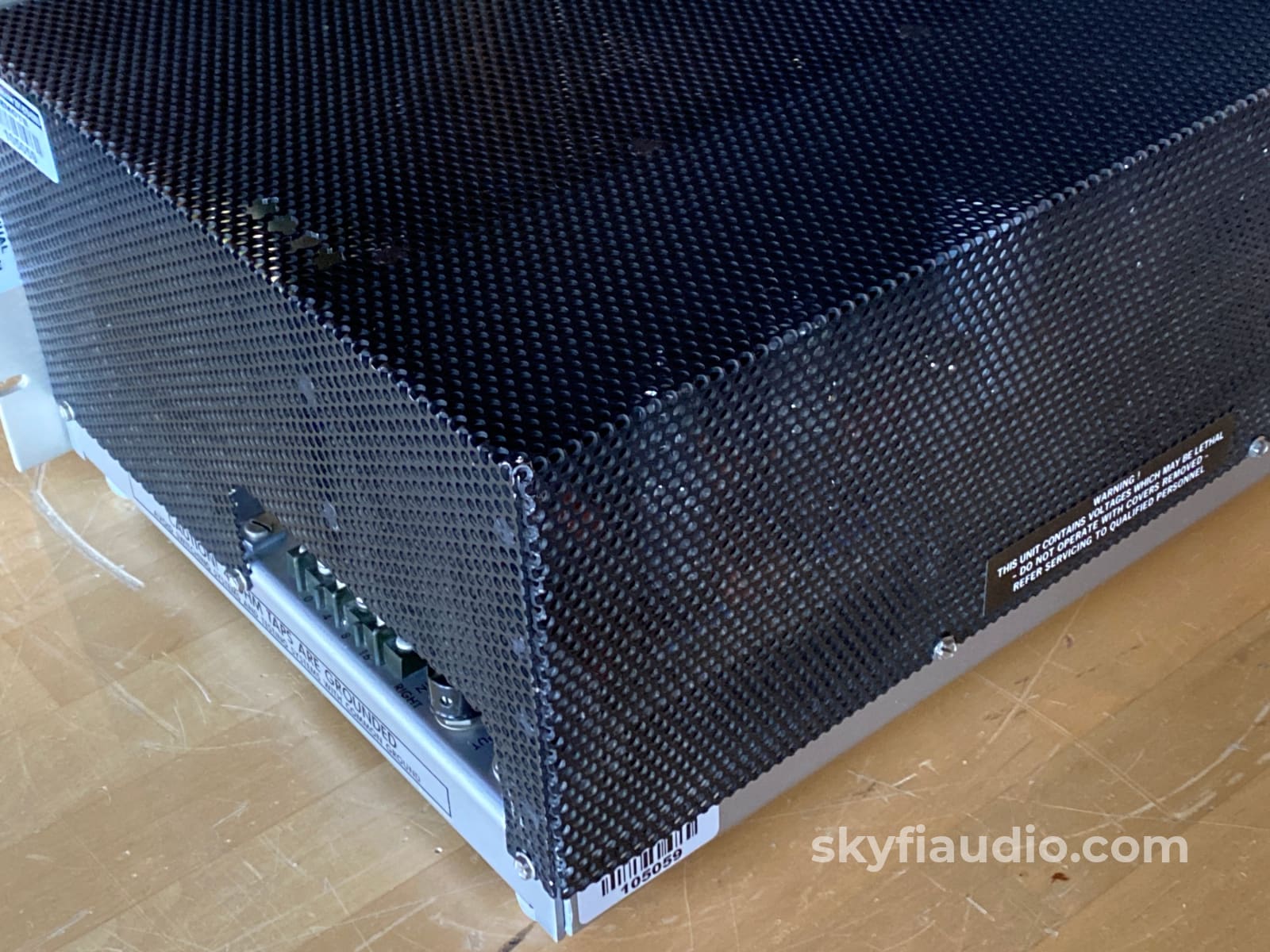
Audio Research D-76 Vintage Tube Amplifier - 75W x 2
Free Shipping on Most Electronics - Excludes Speakers and Items Requiring Freight - Contiguous U.S. Only
Pickup currently unavailable at SkyFi 479

Audio Research D-76 Vintage Tube Amplifier - 75W x 2
SkyFi 479
479 South Broad Street
Glen Rock NJ 07452
United States
General:
The ARC D-76 is a favorite among vintage audio collectors and tube rollers.
This example arrived in great condition considering it's over 50 years old, and is nearly all original and unmolested.
We fitted some new tubes as described below and performed a light service to ensure it is working and plays reliably in its new home.
SkyFi Cosmetic Notes:
• Right channel terminal block has some damage.
• Top cover is missing a protective plastic ring on the cover by the right channel connections.
SkyFi Technical Notes:
• Output tubes are all very high-quality Svetlana 6550
• Tested all remaining tubes
• Replaced all 12AX7 with current production Jadis branded China triple mica 12AX7
• Replaced weak 6CG7 w/Japanese NOS (New Old Stock)
• Set bias to 50mA
• Set AC Balance w/ Scope
• Tested both channels to approx. 80W at clipping
• Listening test PASS
More from ARC vintage marketing materials (D-76 / D-76A):
In the late 1950's and early 60's amplifier designers were competing to get THD and IM distortion down to 1% or lower. After that goal was achieved the competition among manufacturers turned to higher power in the late 60's and early 70's. Today, numerous manufacturers offer high power amplifiers at just a few dollars a watt and all with 1% distortion or less.
During these same time periods, a few audio designers were discovering that low static distortion measurements were not enough to assure good sound reproduction. Amplifiers having similar low distortion often sounded quite different under the dynamic demands of music reproduction. Obviously, these "low distortion" amplifiers had distortion, and plenty of it, but there was no method of measuring distortion under these conditions.
Now, in the mid 1970's, an increasing number of manufacturers are acknowledging this phenomenon and claiming to have improved designs which offer better "sound quality" in addition to good specifications.
Since the late 1950's, engineers at Audio Research have been aware of these problems. To achieve low distortion under the dynamics of music, Audio Research has investigated many approaches to amplifier design, including the conventional bipolar transistor, FET, V-FET, Class D (switching), tube and various combinations of each. Our continued research indicates that our best tube circuits (patented) provide the most musical amplifier design. Tubes, per se, don't ensure a musical sounding amplifier. It's just that our patented, cross-coupled, balanced tube circuitry is something that neither we nor anyone else has been able to improve upon.
It is sometimes hard for the audiophile to accept, but all amplifiers are a compromise in at least one of four main areas-sound quality, construction quality, power, and/or price. Despite advertising claims, no manufacturer (including Audio Research) is able to offer an amplifier that is best in all four of these areas. The Audio Research D-76A amplifier was designed to excel in two specific areas quality sound and quality construction.
To offer more power per dollar would require a compromise in either sound or construction quality which would be pointless since the market is flooded with good "compromise" amplifiers. The D-76A was designed for the audiophile perfectionist that wants quality first and will take nothing less."
Brand Background:
Audio Research continues its dedication to unparalleled musical expression and crafting components of the highest quality and lasting value for its customers.
Our long-term dedication to service is peerless in this industry (Audio Research, with few exceptions, can repair anything ever produced during its entire history).
We continue to seek out new and exciting ways to make music more real and more enjoyable. More than just a name or a marketing tool, Audio Research has come to represent exceptional performance and long-term value. Experience Audio Research – experience High Definition®.
Ownership:
Single Owner
General Sound:
Smooth, uncolored, undistorted and beautiful musical sound with little fatigue.
Cosmetic Condition:
7/10 = Good. One or two minor scratches. Well Maintained.. See our detailed rating description here.
Working Condition:
Working perfectly and tested in our lab and listening room.
Included:
Just the unit and power cord.
Packing:
Will be packed using our highly developed in-house process and custom packing materials.Weight:
52 lbs.
Dimensions:
19" W x 7" H x 12 ¼" D
Approximate Age:
1974
Link to Manual:
Click Here
Recommended Cables:
Kimber Kable - RCA Interconnects - Better
Kimber Kable - RCA Interconnects - Best
Kimber Kable - Speaker Cables - Better
Kimber Summit Series Monocle XL Speaker Cables (PAIR) - Best
Kimber Summit Series BiFocal XL Bi-Wire Speaker Cables (PAIR) - Best If Applicable
Kimber Kable - Power Cords - Better
Kimber Kable - Power Cords - Best
Specs:
POWER OUTPUT
75 Watts per channel minimum RMS (both channels operating) into a 4, 8 or 16 ohm load from 20 Hz to 15 kHz with less than 1% total harmonic distortion
INPUT SENSITIVITY
1.5 volts for rated output
INPUT IMPEDANCE
80K ohms at 20 Hz; 30K ohms at 15 kHz
OUTPUT TAPS
4, 8, 16 ohms
DAMPING FACTOR
14 at 8 ohms (1 kHz)
DISTORTION
Intermodulation distortion: less than .5% at rated power
HUM & NOISE
More than 80 dB below rated output
POWER REQUIREMENTS
100, 120, 200, 220, 240 VAC; 50-60 Hz, 550 watts at rated power output
TUBE COMPLEMENT
(4)12AX7, (8) 6FQ7, (2 matched pairs) 6550, (1) 6550
Testing Process:
We start with a visual inspection of all internal components to make sure that there are no signs of heat stress or damage. Capacitors are checked for telltale signs of predictive failure including bulging, shrunken wrappers, or physical leakage. We also inspect resistors and other passive components for signs of overheating. If tube arcing has occurred in the past we can usually spot discoloration on the output tube sockets. On vintage units we often spot check select capacitors for value and ESR.
If the amplifier passes visual inspection, we move on to a full test of all of the tubes. We use an Amplitrex AT-1000 Tube Tester which is capable of testing both emission and Gm with a high degree of accuracy. We document the results of each tube and replace any weak or suspect tubes before proceeding. When we power on tube amplifiers for the first time we usually use a variac and current limited AC supply and slowly raise the voltage up to nominal mains level while monitoring plate, screen, filament, and negative bias supply voltages where applicable. If everything is in order we feed a low level test signal into the amplifier’s input and monitor its output on an oscilloscope across an 8 ohm dummy load. At this point we are just looking to verify basic function and confirm that the output transformers are not damaged. Once we have verified that the amplifier is safe to operate, we connected it to full mains power. For fixed bias amps we set the bias to manufacturer spec. For cathode biased amps we monitor the plate to cathode voltage to determine if the output tubes are operating in a safe range. Once the output section is verified we move onto bench evaluation.
We start by feeding the input of the amplifier with a low level 1KHz test signal, slowly increase its amplitude while monitoring the amplifier’s output on an oscilloscope for signs of noise, clipping, distortion, or improper channel balance. We continue increasing the signal level until the amplifier reaches clipping. At this point we take an output power measurement and compare it to the spec sheet of the amplifier to verify proper performance. We finish off the bench evaluation with a 1KHz square wave check and a 20Hz to 20KHz sine sweep to assess the amplifier’s frequency response characteristics. This battery of tests will usually reveal if the amplifier has any issues that need further attention.
Before the device leaves the bench, we perform a listening test with actual music using a variety of preferred test tracks. Our benches are outfitted with familiar monitor speakers which help us identify inconsistencies that will not always show up on our test gear. The main things that we are listening for are hum or noise with no signal present, proper center image, clicks, pops, or any other obvious undesirable audio characteristics.
If the unit passes all of these tests it is moved to our long term testing rig where we simulate real word operating conditions for 6-8 hours. For tube amps we like to run this test at least twice. This allows us to monitor the unit for signs of thermal runaway or intermittent issues that only crop up when it has fully come up to temperature. We find this step to be essential, especially for vintage units.
Choose options















